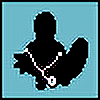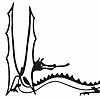HOME | DD
 Kaoyux — Katakana Chart + Video
Kaoyux — Katakana Chart + Video

Published: 2012-02-04 19:16:55 +0000 UTC; Views: 38693; Favourites: 1177; Downloads: 2480
Redirect to original
Description
YES, that's the japanese characters order and it must be learnt that way!Here you are, the katakana chart for those who are interested in learning japanese.
Hiragana version:
Katakana - Stroke Order sheet: [link]
Hiragana and Katakana Stroke Order table:
Here you are a VIDEO about me practising some hiragana characters in real time:














 [link]
[link] 














Kana Recognition Practice: [link]
You can select:
1. The kind of Kana: Hiragana, Katakana (premium members) or Both
2. "Play sounds" or not (they are played just after you write the answer)
3. Which groups of kana you want to practice
Related content
Comments: 80

oh gracias la verdad estaba interesada en aprender japones
👍: 0 ⏩: 0

I really love all of these, they look very nice, and have the modified characters as well! Great job
👍: 0 ⏩: 0

I just have to say, I love your hiragana and katakana tables! They're playful, beautiful, and easy to read. The best I've EVER seen! ^_^
👍: 0 ⏩: 0

The links to the stroke order sheets are inverted. This page has a link to the hiragana stroke order sheet, and the hiragana page has a link to the katakana stroke order sheet.
👍: 0 ⏩: 0

Thesedays, we often use "ヴ" (vu)
ヴァ<=>va
ヴィ<=>vi
ヴ<=>v, vu
ヴェ<=>ve
ヴォ<=>vo
For example, エヴァンゲリオン(EVANGELION), or ヴァージニア(Virginia)
They are used, like other Katakana, to write foreign words or express sounds
👍: 0 ⏩: 1

Thank you very much for your suggestion, really appreciated
New knowledges are always welcome ^^
👍: 0 ⏩: 1

How do you know when to use Katakana or to use Hiragana? c:
👍: 0 ⏩: 1

From what I heard, you use Katakana when writing foreign (not originated in Japan) words, like "bideo" and Hirigana when writing about native words like "onigiri"
👍: 0 ⏩: 1

which one is used more frequently~?
👍: 0 ⏩: 1

Japanese mainly use Hiragana or Kanji is what I heard, but it's still important to learn at least a little of all three
👍: 0 ⏩: 0

The link goes to the Hiragana order sheet not Katakana
👍: 0 ⏩: 0

This looks interesting. I have recently made a kana system facilitated for international use that also fixes some inconsistencies with the system when used to write japanese. I posted it into omniglot forum.
👍: 0 ⏩: 0

All of my YES. (thank you for this! >w👍: 0 ⏩: 0

fiuu! thanks a million, for this and for the awesome yaoi
👍: 0 ⏩: 1

Do you have one for names? Like syllabes and stuff...
👍: 0 ⏩: 0

I've been looking everywhere for something like this! Ur amazing!
👍: 0 ⏩: 0

with these you have become one of my new favorite people in the whole wide internets
👍: 0 ⏩: 0

You are so awesome thank you! Always had a problem with Katakana -___-
You made it look so pretty ~
👍: 0 ⏩: 0

Love It!
And I agree with it is one of the most useful things you can find here on deviantART and for that, I thank you
👍: 0 ⏩: 0

When everyone is too lazy to use Google search engine...!
👍: 0 ⏩: 1

This is possibly the most useful thing that I've found on DeviantART for quite some time, and such a neat way of laying it out too. Congratulations.
~Jester
👍: 0 ⏩: 1

oh really?? THANKU cery much ^^
👍: 0 ⏩: 0

am i the only one looking at this going "WTF, I'm so confused"
👍: 0 ⏩: 1

Katakana are syllables, each with their own character. The left chart shows them all. You form the syllables by taking the consonant sound on the left and the vowel sound up top. So "ka" is カ, "mo" is モ and so on.
Japanese also has a different pronunciation for some of the -i and -u syllables: si is shi, ti is chi, etc. So sushi in katakana would be スシ, except that because sushi is an actual Japanese word it wouldn't be written in katakana in the first place.
The Y series only has three sounds: ya, yu and yo. -i syllables pair with the y series to create new sounds. So ki (キ) and ya (ヤ) make the sound "kya". That's what the yellow charts show.
Japanese also has things called "ten ten" (dot dot) (alternatively, dakuten if you want to be formal) that also change the sounds. They generally just change the force of the air you use to make the sounds, if that makes sense. So "ka" goes to "ga" with the ten ten. If you say them both after each other, you'll notice that your mouth makes mostly the same action; "ga" is just a little bit softer. The same applies to "ta" and "da".
The H series also has a little extra; it has a maru (meaning circle)(handakuten for formal language), changing the sound to a P. So ハ would actually have three sounds, depending on what's going on in the upper right corner: ha, ba, and pa.
And that's basically the run-down of hiragana and katakana. It would be so embarrassing if the only reason you were confused was because of the way it was organised or something...
👍: 0 ⏩: 2

oh my gosh! this was extremely helpful! and i wasn't just confused by how it was organized, i've never really made any attempt to learn Japanese before so i think i was just a little overwhelmed
👍: 0 ⏩: 1

That's good, I was worried I might be lecturing you on something you already knew
👍: 0 ⏩: 0

I have to admit that I was confused at first when I saw this, I didn't quite understand it to be honest, but this explanation makes sense and now I can begin to study it, so thank you very much
👍: 0 ⏩: 1

You're welcome! Japanese is a wonderful language XD
👍: 0 ⏩: 1

This would have help my cousin so much if this was made at the start of last year
👍: 0 ⏩: 1
| Next =>






































